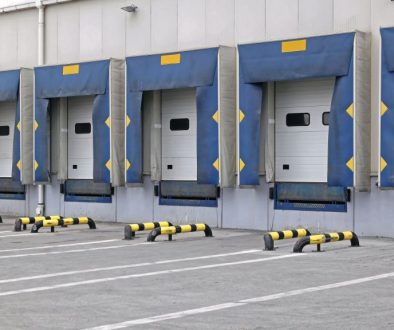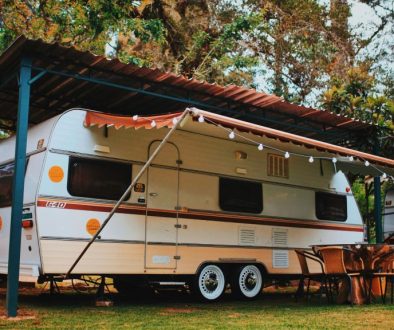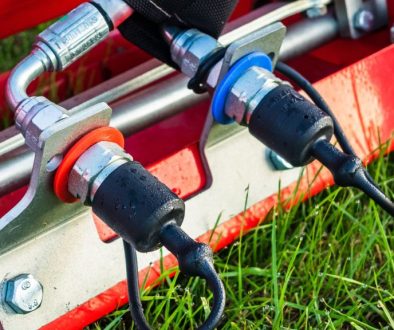Truck bodywork and paint repairs are crucial components of maintaining a fleet in optimal condition. Over time, your trucks are bound to face wear and tear, whether from the stresses of the road, accidents, or environmental factors. A damaged or poorly maintained exterior not only affects the aesthetic of your fleet but can also lead to more significant issues if left unchecked.
In this blog, we’ll explore common truck bodywork and paint repair problems, the steps to resolve them, and how to prevent future damage. With practical insights, you’ll be better equipped to handle repairs and extend the life of your vehicles.
Common Truck Bodywork Issues
1. Collision Damage and Dents
Trucks are constantly on the move, and unfortunately, collisions are inevitable. Dents, scratches, and structural damage can result from contact with other vehicles, roadside obstacles, or minor accidents in parking lots.
How to fix: For minor dents, paintless dent repair (PDR) is an effective solution. Severe cases may require panel replacement or realignment followed by repainting.
2. Rust and Corrosion
Rust is common in fleets operating in regions with heavy rainfall or snow. It occurs when metal is exposed to moisture and salt, causing the paint to deteriorate and metal to corrode.
How to fix: Remove rusted areas completely by sanding down corroded sections. If rust affects structural components, replacement may be necessary. Priming and repainting help prevent further rusting.
3. Paint Chips and Fading
Exposure to extreme weather, road debris, and UV rays can cause paint chips and fading, making the metal underneath vulnerable to rust.
How to fix: Small chips can be fixed with touch-up paint, while extensive fading may require a full repaint.
The Repair Process: Step-by-Step
1. Assessment
A thorough inspection identifies dents, scratches, rust, and structural issues. Hard-to-see areas like wheel wells and undercarriage should also be checked.
Pro Tip: Always inspect for hidden damage that could worsen over time.
2. Preparation
After assessing damage, the truck is cleaned and sanded down. Rusted areas must be completely removed before applying any filler or primer.
Pro Tip: Ensure a well-ventilated area for paint repairs to avoid harmful fumes.
3. Repair
Repairs may involve dent removal, rust treatment, frame alignment, or part replacement. Extensive damage may require truck disassembly.
Pro Tip: Use high-quality primer and sealants to prevent future corrosion.
4. Repainting
After repairs, a base coat and clear coat are applied for a durable finish. Some trucks may need a full respray for uniformity.
Pro Tip: Use UV-resistant, high-durability paint for long-lasting protection.
Preventing Truck Bodywork and Paint Damage
1. Regular Inspections
Frequent checks help catch minor issues before they escalate. Pay attention to high-risk areas like wheel wells and bumpers.
Pro Tip: Schedule a professional inspection every six months.
2. Protective Coatings
Applying ceramic coatings or rust-proofing sprays protects against road debris, salt, and harsh weather.
Pro Tip: Invest in undercoating services for fleets in snowy or salty environments.
3. Timely Repairs
Addressing damage promptly prevents further deterioration. Small chips and dents can worsen over time, leading to costly repairs.
Pro Tip: Encourage drivers to report damage immediately.
Case Study: A Fleet Manager’s Experience with Bodywork Repairs
A fleet manager overseeing 50 trucks faced significant damage after an accident. Rust had begun forming around the affected area. Instead of a quick fix, the manager opted for high-quality repairs, including rust removal and full repainting.
Outcome: The truck looked brand new, rust was prevented, and resale value was preserved. Investing in quality repairs resulted in fewer breakdowns and improved safety.
Keep Your Fleet in Top Shape
Truck bodywork and paint repairs are essential to fleet maintenance. Understanding common issues, repair processes, and prevention measures can keep your trucks in excellent condition.
Regular inspections, timely repairs, and protective coatings save time and money in the long run. Learn more about professional fleet services to keep your trucks in peak condition.
FAQs
- What is the cost of truck bodywork repairs?
- Costs vary by damage severity. Minor dent repairs range from $200 to $500, while frame realignment or repainting can cost $1,000 to $5,000.
- How long does truck bodywork repair take?
- Simple fixes may take hours, while extensive repairs could take several days.
- How can I prevent rust on my truck?
- Regularly wash your truck to remove salt and debris. Rust-proofing sprays and coatings provide additional protection.
- Can paintless dent repair be used for large dents?
- PDR works best for small, non-structural dents. Larger dents may require traditional repairs.
- How do I ensure a quality truck paint job?
- Choose reputable repair shops that use high-quality paint and tools. Look for certifications from recognized auto body repair organizations.




